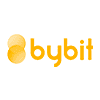Words like “CryptocurrencyCryptocurrency
Digital currency that uses cryptography. Bitcoin & Altcoins are all types of cryptocurrency.
Blockchain
A digital, distributed ledger which contains data for all the transactions that have ever taken place using a given cryptocurrency.
Since cryptocurrencies are a digital form of money, we’ll begin with a brief history of money itself.
Words like “CryptocurrencyCryptocurrency
Digital currency that uses cryptography. Bitcoin & Altcoins are all types of cryptocurrency.
Blockchain
A digital, distributed ledger which contains data for all the transactions that have ever taken place using a given cryptocurrency.
Since cryptocurrencies are a digital form of money, we’ll begin with a brief history of money itself.
Then out of the midst of it all, Bitcoin emerged.
A brief history of currency
The earliest humans likely traded goods and services directly without any intermediary - a practice known as “bartering.”
A famous example from many introductory economics classes involves two people on an island. One of them is skilled at fishing and the other is skilled at harvesting coconuts. The fisherman trades fish for coconuts and the coconut “farmer” trades his coconuts for fish. At some point, though, a third skilled person inevitably enters the situation.
The third person is skilled at hunting. He wants to trade his meat for coconuts, but the coconut farmer doesn’t want meat. Bartering is no longer viable. Now, the island people need a “medium of exchange.” They need money.
Sources disagree with one another about the first true medium of exchange. Some sources cite China’s use of miniature tools in 1100 BC as the first currency. Others point to the coins created by King Alyattes of Lydia in 600 BC. Regardless of which instance you believe to be the “first,” somewhere along the way, humans began using currency as a medium of exchange.
The first use of paper currency is usually attributed to the international trade that took place in 17th century Europe. Wire transfers facilitated by Western Union’s telegraph network occurred as early as 1872.
Source: TransferGo Youtube Channel
The introduction of plastic
“Charg-it” was the first actual bank card, issued in 1946 by a bank in Brooklyn, but it only allowed individuals to make local purchases. The first widely accepted credit card wasn’t introduced until 1950 by the Diners Club Inc. In 1958, the American Express Company introduced another major card which was used for travel and entertainment purposes.
A decade later, credit cards had become commonplace and new improvements were added; magnetic strips were introduced in the 1960s to make cards easier to use and chips were implemented after 1990 to improve security.
1989 and beyond: When did cryptocurrency begin? When did blockchain start?
Before 1989, every iteration of currency and improvement made to it can be seen as an advancement aimed at making payments faster, easier, and more secure, and they were effective. However, every form of currency discussed thus far, coins, paper money, credit cards, relies on a centralizedCentralized
Controlled by one group or within one certain area.
Peer to Peer
Decentralized networks in which individuals interact with each other directly.
David Chaum, a computer scientist, changed the history of money in 1989 by introducing DigiCash. DigiCash was a cryptographicCryptography
Code making, breaking and studying.
DigiCash was, in essence, the first cryptocurrency. The system made use of an email mailing system for trading and off-market exchanges reportedly took place between traders. It enjoyed support from libertarians and other groups who advocated an international payment system that wasn’t under government control. It came close to becoming the conventional online payment system.
However, DigiCash suffered from internal conflicts and a lack of recognition. It failed. David Chaum left the company in 1996 and the firm filed for bankruptcy two years later. Its assets were sold to eCash Technologies which was acquired by InfoSpace in 2002.
Flooz was another virtual currency in the late 1990s, but it died in 2001 due to dwindling support and a host of criminal activities on its platform. Other ideas for online payment systems with secured ledgers such as B-Money and BitGold were formulated but not implemented. Then out of the midst of it all, Bitcoin emerged.
Bitcoin appeals to people because it offers peer-to-peer transactions apart from user-to-merchant transactions and removes the need for trusted third parties.
2008: The Problems Bitcoin Solved
Pre-2008, online payment systems had a major problem apart from privacy: double spendingDouble Spend
A famous problem that occurs when cryptocurrency is spent more than once. Miners and transaction finality ensure that double-spend cannot occur.
The only way around this was to have a central authority to verify transactions on a highly-guarded ledger. But this didn’t get rid of centralization (and the security concerns it brings) nor the need for trusted third parties who charge high fees to verify transactions.
In the aftermath of the 2008 economic meltdown, Satoshi NakamotoSatoshi Nakamoto
The anonymous person or group that created Bitcoin.
Like DigiCash, Bitcoin is an electronic cash system secured by cryptography - but Satoshi Nakamoto was the first to introduce decentralizationDecentralized
Distributed amongst its users rather than controlled by one group or within one certain area.
Ideally, payment systems are made up of a number accounts, currencies, and a ledger that records transactions in the system. Bitcoin uses cryptography to encrypt and secure its accounts and then decentralize its ledger, a model which made it immutable and greatly improved its security.
Instead of having one centralized ledger, Bitcoin introduced a network of identical and immutable ledgersImmutable Ledger
The term used to refer to blockchains to describe the way in which blocks cannot be changed after they are recorded.
Consensus
A general agreement among participants using and mining a cryptocurrency.
In order to create a free-flowing currency of value, Bitcoin introduced scarcity. Certain members of the network are rewarded with a cryptocurrency (called Bitcoin) when they solve complex mathematical computations. This process is called miningMining
The process by which new coins are created as transactions on a network are verified.
Nakamoto launched the system in early 2009. It met a lot of skepticism at first but was gradually embraced by the world. As of mid-2018, Bitcoin is worth thousands of dollars with experts saying that its price has the potential to rise to hundreds of thousands of dollars.
Unlike traditional payment systems, Bitcoin provides a great deal of anonymity, even while staying transparent. Because it doesn’t require personal information from its users, governments can’t monitor citizens’ financial dealings on the system, although transactions are broadcasted publicly. It also provides better security due to its decentralized nature.
Source: CuriousInventor Youtube Channel
The more people understand Bitcoin and how it works, the more interested they become in the technology. Bitcoin appeals to people because it offers peer-to-peer transactions apart from user-to-merchant transactions and removes the need for trusted third parties.
Bitcoin’s blockchain technology and decentralized nature brought about astounding use cases and ushered in a new age of cryptocurrencies.
Blockchains and Cryptocurrencies now: Ethereum, other altcoins and ICOs
It didn’t take long for other blockchain technologies that were modifications of Bitcoin’s design to arrive. They possessed different properties and peculiar functionalities. They became referred to as altcoinsAltcoin
Alternative Coin. Bitcoin is known as the first and foremost cryptocurrency, so any cryptocurrency that is not Bitcoin is an altcoin.
Ethereum, founded in July 2015 by Vitalik ButerinVitalik Buterin
A highly respected programmer responsible for writing Ethereum's white paper and co-creating Ethereum's technology.
Smart Contracts
Agreements between two parties that self-execute when their terms are met and automatically cancel when their terms are not met.
Ethereum allowed people to create their own tokens via its smart contracts feature. This allowed Ethereum to introduce an entirely new use of cryptocurrencies: crowdfunding. Enterprises create custom token via Ethereum and sell them (usually to the public) to fund their projects in what is called an Initial Coin OfferingICO
Initial Coin Offering. An event in which a cryptocurrency project “goes public,” selling early coins in exchange for funds.
There are over 1,500 cryptocurrencies in existence today and the list is growing. Blockchains - secure, immutable ledgers that store unchangeable information - have found use cases in many facets of the global industry, economy, and society. The technology, although still at a nascent stage, holds massive potential to disrupt many industries and greatly affect our everyday lives.
The disruption has already started; those that inform themselves the most will reap the greatest benefits.
Find out more information on how to use cryptocurrencies.
- Own a website? Link to this article!
- Willing to spread the love? Share it on social!





















